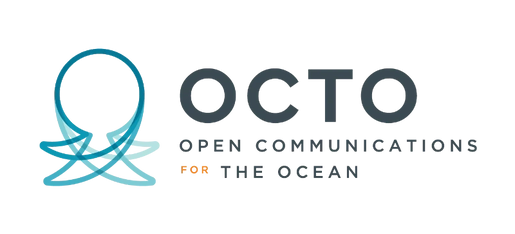RACHEL BROOKS
Rachel Brooks is an internationally acclaimed Wildlife Artist and Scientific Illustrator based in the Scottish Highland town of Oban. She specialises in marine wildlife, capturing high levels of intricate detail using ink. Drawing from her extensive background in Zoology, Marine Biology, and the Scuba Industry, she has immersed herself in the field, spending years amidst her fascinating subjects.
Living in world renowned marine environments such as the Great Barrier Reef, Ningaloo Reef, the Lembeh Straits and the Coral Triangle. Rachel has gathered inspiration from across the globe which is reflected in the diversity of wildlife found within her work.
Rachel now resides in the Scottish Highlands and has spent three years working in the Sea of the Hebrides Marine Protected Area with basking sharks. She is an advocate for celebrating the often overlooked marine life found in the UK, and for shark conservation.
As a story teller, art is her main media, but she is also a photographer, speaker and science communicator.
Rachel has been shortlisted for her wildlife photography as well as being shortlisted for her wildlife art in the Wildlife 100 Artist of the Year Award. She has exhibited at London's Royal Geographical Society, the OXO Tower as well as nationally and virtually at the New York Explorers Club. She has been featured by Discovery Channels Shark Week and collaborated with a number of charity partners such as the RSPB and the Shark Trust.
Check out more of Rachel's stunning art and illustrations:
🌐 https://www.rachelbrooksart.com
📸 Instagram: @rachelbrooksart
Unless stated otherwise, all artwork and photos in this article: © Rachel Brooks
How does the ocean inspire you art?
As a marine wildlife artist, the ocean is at the heart of what I do. There is more to be seen and discovered in the ocean than I could draw in a lifetime.
I am captivated by all the creatures that make the ocean their home. It feels otherworldly and I am endlessly inspired by the biodiversity, lives, colours and mysteries of our ocean.
Do you have a personal or first experience with the ocean that shaped your art?
I don’t have a single experience that shaped my art, it is more of an accumulation of years spent on the water.
My background is in Zoology and after graduating I began working in the dive industry in Australia, which led me to working in some of the world’s most renowned marine environments.
The Great Barrier Reef, Ningaloo Reef and the Coral Triangle became my office, before heading back to the UK and finding a job working in the Sea of the Inner Hebrides MPA.
Over 8 years, my full time job allowed me to scuba dive most days, meeting charismatic megafauna such as basking sharks, whale sharks and manta rays, and fascinating critters like the blue-ringed octopus, flamboyant cuttlefish and hairy frogfish! It was the years I spent studying these animals up close, seeing their movement, textures and behaviours that inspired me to start drawing them. I have always wanted to show the diversity of life that can be found in our oceans, and celebrate the connections within ecosystems that are so important for their future.
Tell us about art you created that is inspired by the ocean
Although I do draw terrestrial species, almost all of my art is focused on the ocean.
One of the stories that has always stuck with me is that of the ‘West Coast Community’ of orca in Scotland. The iconic pod are mostly seen around the Hebrides, but sadly over the years they have been unsuccessful in breeding due to pollutants causing infertility, and now only 2 males remain.
I have been fortunate to see them on a few occasions, and although incredibly exciting to see these elusive orca, I’ve always felt a great sadness knowing they are the last of their kind.
I drew ‘John Coe’ and filled his silhouette with marine life from the Hebrides, showing how synonymous these apex predators are with the landscape. The piece was exhibited as a finalist in the ‘Sketch For Survival, Wildlife 100 of the Year’ in galleries across the UK, and virtually in New York.
It was such a privilege to be able to share this story with so many people.
In your opinion, why is it important to protect marine spaces?
It is essential to protect marine species. I can’t think of any argument for not protecting the wildlife we are sharing the planet with.
We have become far too disassociated with nature, not realising how incredibly intertwined we are within the ecosystems in the world for the basics of food, clean air and water.
The ocean plays such as important part in regulating the climate, as do the species found there. We need to stop looking at the ocean as an endless resource we can continually take from and dump in, but an environment that is essential for our health and future on earth which needs better protection.
What can art bring to the conversation in marine protection?
Art is a really powerful communication tool. It is emotive, encourages thought, and speaks to people in different ways. Sometimes images can be hard to look at, and can make people want to look the other way. Art can approach the same issues, but with an entirely different visual.
Telling a story of what is happening with creative imagery, and telling stories that you couldn’t capture in a single image.
Photojournalism is so important to see the harsh realities our world is facing, but everyone communicates differently, so it’s essential to have as many creative voices on board speaking in their own way to reach as many people as possible.
"I have always wanted to show the diversity of life that can be found in our oceans, and celebrate the connections within ecosystems that are so important for their future."
Rachel Brooks


Join us for a special OCTO webinar celebrating MPA DAY
10 February 2026, 16:00 CET / 17:00 EET/SAST
